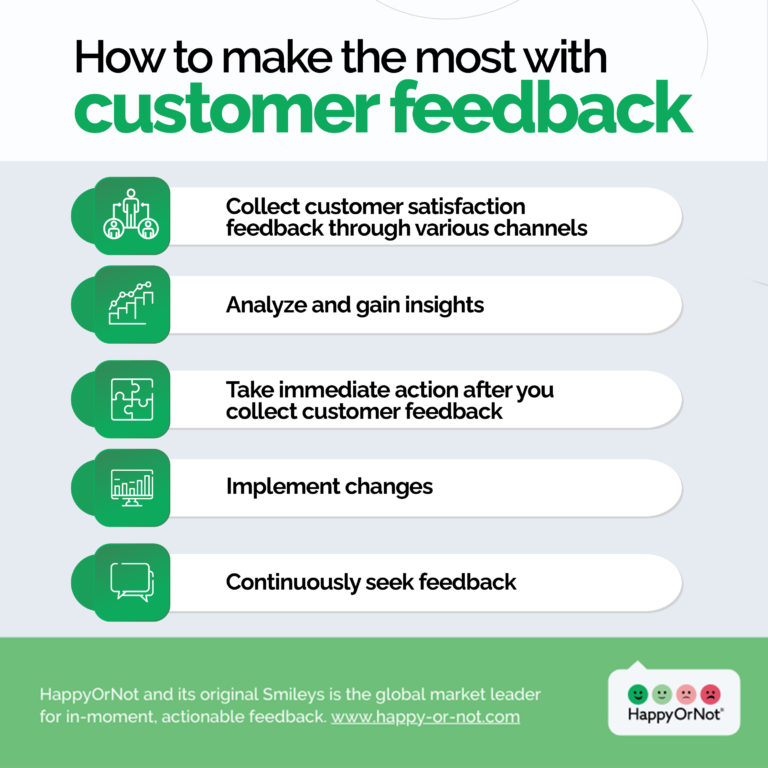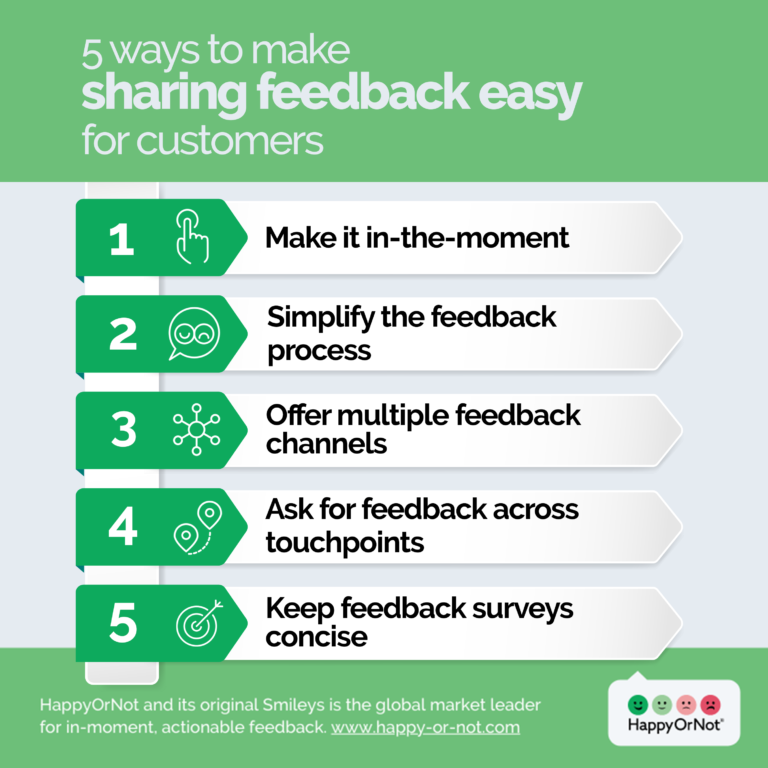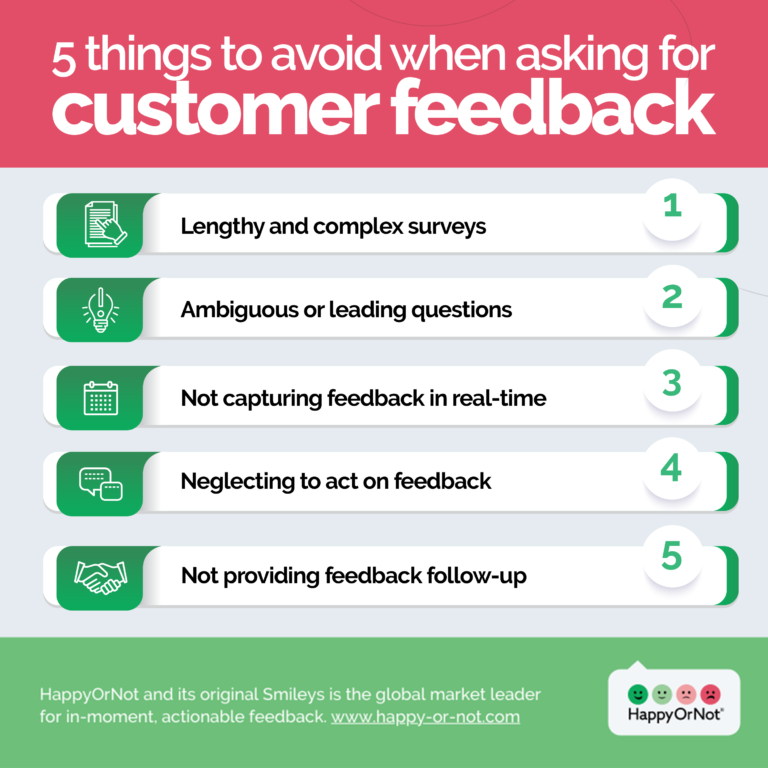How to ask customers for feedback [10 proven methods]
Asking customers for feedback is not just a courtesy but a strategic move that can significantly benefit your business.
By actively seeking customer feedback, companies demonstrate their commitment to customer satisfaction and show that they value their customers’ opinions and experiences. In this article, we’ll explore 10 proven methods to make it easy for customers to share feedback.
Why customer feedback matters
By collecting customer feedback, businesses can engage with their customers and show that their opinions and experiences matter. When customers feel heard and valued, they’re more likely to develop a sense of loyalty and maintain a solid relationship with the brand.
In addition to benefiting existing customers, customer feedback is crucial for attracting potential customers. Positive feedback shared on social media channels, review platforms, or through word-of-mouth can influence the purchasing decisions of others.
On the other hand, addressing negative comments and resolving customer issues promptly can showcase a business’s commitment to customer satisfaction and turn unhappy customers into loyal advocates.
5 ways to make the most with customer feedback
To maximize the value of customer feedback, businesses need to have a strategic approach to collecting and utilizing it effectively. Here are some key steps to make the most of customer feedback:
- Collect customer satisfaction feedback through various channels
Use customer feedback surveys, feedback forms, and other methods to gather feedback from your customers. Make it easy for them to leave feedback by providing convenient options like email customer surveys, live chat sessions, or dedicated feedback forms on your website.
- Analyze and gain insights
Once you have collected feedback, it’s important to analyze it thoroughly to gain meaningful insights. Look for patterns, trends, and common themes in the feedback to identify areas for improvement or opportunities to enhance the customer experience.
- Take immediate action after you collect customer feedback
Promptly respond to customer feedback, especially when customers express concerns or dissatisfaction. Addressing their feedback promptly shows that you value their input and are committed to resolving any issues.
- Implement changes
Use the valuable information gathered from customer feedback to improve your products, services, and overall customer experience. Whether it’s enhancing your app’s functionality, refining your customer journey, or providing better customer support, implementing changes based on feedback can lead to better customer satisfaction and loyalty.
- Continuously seek feedback
Customer feedback is an ongoing process, and it’s essential to consistently ask for customer feedback to stay connected with your customers’ evolving needs.

5 ways to make it easy for customers to share feedback
By implementing these strategies, businesses can make it easier for customers to share feedback, leading to a higher response rate and a deeper understanding of customer insights. This valuable feedback can drive improvements, enhance customer loyalty, and attract new customers by demonstrating a commitment to continuously improving the customer experience.
- Make it in-the-moment
Give customers a way to leave feedback at the exact time and place of experience. When the experience is fresh in their minds and they are able to immediately share their feedback, the insights you collect are more accurate and reliable to use in making quick and effective actions. - Simplify the feedback process
Make it quick and easy for customers to share their feedback by streamlining the process. Use a concise feedback method with clear, straightforward survey questions that don’t require excessive time or effort. - Offer multiple feedback channels
Provide customers with various options to share their feedback, both in-store and online. Offer such digital methods as email surveys, online feedback forms, or live chat sessions, and physical methods such as in-moment feedback kiosks to cater to different preferences and engage customers across all channels. - Ask for feedback across touchpoints
Request feedback when customers are in-the-moment and have valuable insights already in mind. This could be after a purchase at check-out, following a support interaction, or a completed service. Timing is crucial, so ask for feedback when the experience is still fresh in their minds. - Keep feedback surveys concise
Avoid overwhelming customers with lengthy feedback forms or surveys. Ask for information that is truly essential to gather the insights you need.

5 things to avoid when asking for customer feedback
When you gather customer feedback, it’s important to approach the process carefully and avoid certain pitfalls that could hinder the effectiveness of your efforts. Here are five things to avoid when asking for customer feedback:
- Lengthy and complex surveys
Avoid overwhelming customers with long and difficult surveys. Keep the questions concise and focused on gathering the most relevant information. Long surveys can cause unnecessary friction, incomplete or disengenuine feedback, and lower response rates. Instead, prioritize the quality of questions over quantity to encourage higher participation and more meaningful responses. - Ambiguous or leading questions
Be mindful of the wording and structure of your questions. Avoid using ambiguous or leading questions that could bias the responses or confuse customers. Ensure your questions are clear, specific, and free from potential biases. This allows customers to provide honest feedback, essential for gaining accurate insights. - Not capturing feedback in real-time
Capturing feedback at the exact time and place of experience is essential for many reasons. Not only does it provide more genuine and accurate feedback insights, but it can also help to prevent escalation of unintentional dissatisfaction by giving the customer an outlet for sharing their negative feedback immediately and not carrying it onto other platforms or with friends and family. - Neglecting to act on feedback
Following the point above, customers appreciate when their feedback is acknowledged and acted upon. Avoid the mistake of collecting feedback without taking appropriate action. When customers take the time to provide their insights, they must demonstrate that their feedback is valued by implementing meaningful changes based on their suggestions. - Not providing feedback follow-up
After customers have shared their feedback, closing the loop and providing follow-up communication is essential. Avoid leaving customers in the dark after they have provided their input. Whether it’s a thank-you message, an update on changes made based on their feedback, or simply letting them know their feedback was received, providing follow-up shows your commitment to their satisfaction and enhances the overall feedback experience.

Conclusion
Businesses can foster stronger customer relationships and drive positive outcomes by following proven methods like simplifying the feedback process, offering multiple channels, using visual feedback methods, requesting feedback at appropriate touchpoints, and continuously seeking feedback.
Frequently asked questions
How do visual feedback surveys save time for customers and businesses?
Visual feedback surveys save time by allowing customers to express their opinions and sentiments quickly and easily through visuals like images or emojis. Instead of typing lengthy responses, customers can provide feedback with a simple click or tap, making the process more efficient for both parties.
Why are HappyOrNot smiley faces appealing for customer feedback?
HappyOrNot smiley faces simplify the feedback process by minimizing the need for customers to describe their experience with words (although open text is available for those customers who wish to share more). These intuitive smiley face icons range from extremely happy (dark green) to extremely unhappy (dark red), making it easier, intuitive, and more appealing for customers to provide feedback at a glance.
How do pop-ups make it easy to collect feedback?
Pop-ups present feedback requests to customers at opportune moments without disrupting their browsing experience. By using unobtrusive windows that display visual elements like smiley faces or rating scales, pop-ups offer a convenient and hassle-free way for customers to express their opinions and submit feedback.
Why is obtaining qualitative feedback important for businesses?
Qualitative feedback provides in-depth insights into customer experiences, preferences, and pain points. It goes beyond numerical data, offering businesses valuable information and context to make informed decisions, improve products and services, and enhance customer experience.
How to ask feedback from customers in a way that drives insights?
Businesses can gain valuable insights into their customers’ needs, preferences, and expectations by analyzing and synthesizing customer feedback. This insight allows companies to make data-driven decisions, identify areas for improvement, and align their strategies to better serve their target audience.